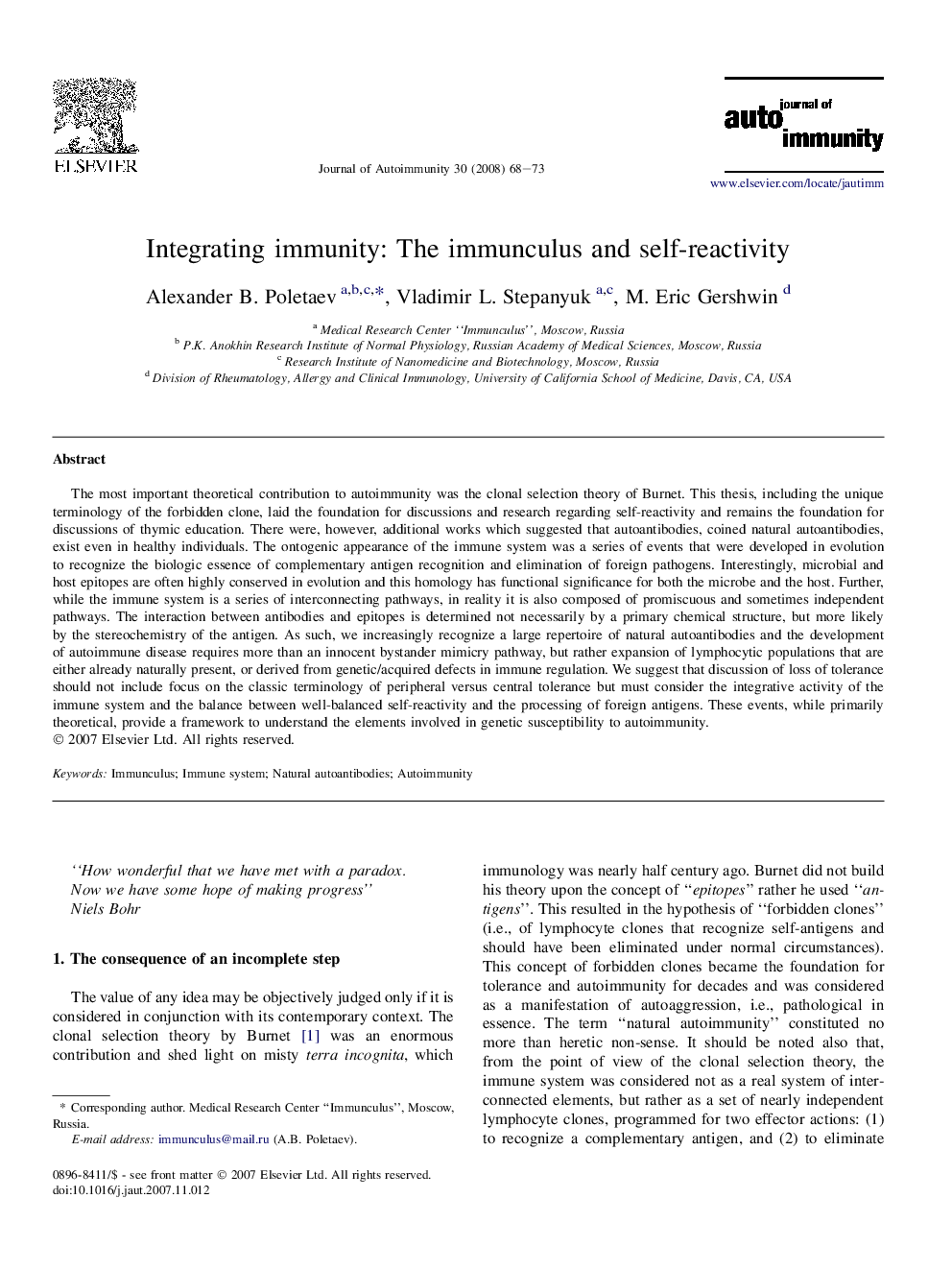| Article ID | Journal | Published Year | Pages | File Type |
|---|---|---|---|---|
| 3368401 | Journal of Autoimmunity | 2008 | 6 Pages |
The most important theoretical contribution to autoimmunity was the clonal selection theory of Burnet. This thesis, including the unique terminology of the forbidden clone, laid the foundation for discussions and research regarding self-reactivity and remains the foundation for discussions of thymic education. There were, however, additional works which suggested that autoantibodies, coined natural autoantibodies, exist even in healthy individuals. The ontogenic appearance of the immune system was a series of events that were developed in evolution to recognize the biologic essence of complementary antigen recognition and elimination of foreign pathogens. Interestingly, microbial and host epitopes are often highly conserved in evolution and this homology has functional significance for both the microbe and the host. Further, while the immune system is a series of interconnecting pathways, in reality it is also composed of promiscuous and sometimes independent pathways. The interaction between antibodies and epitopes is determined not necessarily by a primary chemical structure, but more likely by the stereochemistry of the antigen. As such, we increasingly recognize a large repertoire of natural autoantibodies and the development of autoimmune disease requires more than an innocent bystander mimicry pathway, but rather expansion of lymphocytic populations that are either already naturally present, or derived from genetic/acquired defects in immune regulation. We suggest that discussion of loss of tolerance should not include focus on the classic terminology of peripheral versus central tolerance but must consider the integrative activity of the immune system and the balance between well-balanced self-reactivity and the processing of foreign antigens. These events, while primarily theoretical, provide a framework to understand the elements involved in genetic susceptibility to autoimmunity.
